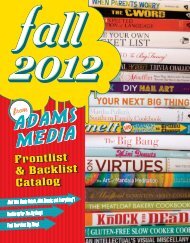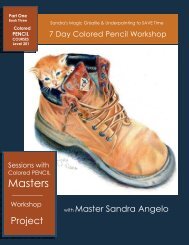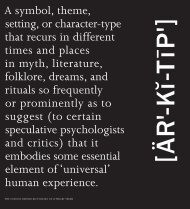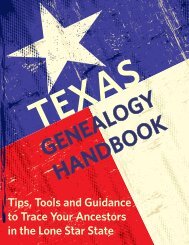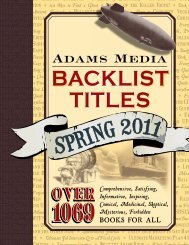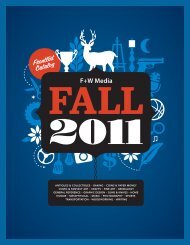You also want an ePaper? Increase the reach of your titles
YUMPU automatically turns print PDFs into web optimized ePapers that Google loves.
oles. Captured French tanks were either stripped of their turrets,which were then used in coastal defences or the obsoletevehicles, such as the FT 17 tanks, were used as mobile machinegun platforms.As the German forces consolidated, their position artillerybecame the dominant factor in the defence of the islands. Thisincluded coastal guns, anti-tank, anti-aircraft and field guns andaside from some half-track prime-movers there was no longtermrequirement for heavy vehicles.The occupying forces soon realized that trucks and a range oflight liaison vehicles were very useful on the small islands whichcould easily be traversed in only a few hours along the narrow,winding country lanes. Among the other things the Germans hadto get used to with the way of life on the islands was the fact thatthe local civilian population drove on the left hand side, includinghorse-drawn carts, as on the British mainland. In the earlydays, there were the inevitable casualties, some fatal, on bothsides but eventually as the Germans were the main vehicle usersthey had full control of the traffic and vehicles drove on the right.STILL ON JERSEYAs the occupation progressed, so the Germans consolidatedtheir position. They brought further equipment to the islands, includingmore military vehicles such as the light range of carsproduced by Stoewer.These were configured in four roles and all given a ‘KfZ’orKraftfahrzeug title to designate their role as a military motorvehicle. These vehicles were produced infour versions and built by Stoewer between The Stoewer R200 outside1936 and 1943. All had four-wheel drive Government House on Jersey.The number on the vehicle’sand served through the war in all theatresright hand mudguard isof fighting. The KfZ1 was a four-seat personnelcarrier for liaison roles, the KfZ2 when driving today and theits modern number for usewas equipped with radios for signals, the number beneath the radiatorKfZ3 served in the light survey role and the is its wartime number. Thered and white unit badge onKfZ4 was armed with a light anti-aircraftthe left hand mudguard is thegun which could also engage ground targets.Division which formed theemblem of the 319 InfantryToday, all German vehicles from the garrison from 1941.period of the occupation have been takenfrom Jersey—with the exception of one Stoewer R200Radio Car. During a recent visit to the island, the vehicleowner, Damien Horn, very kindly agreed to allowMilitary Vehicles Magazine to take photographs of hisR200 vehicle which has been restored to its wartimecondition.In a special move, he drove the vehicle to locationson the island to give an air of authenticity. As readersand vehicle owners know only too well, there is alwayssome discrepancy concerning the specificationsof the vehicle. One reference work will give certaindimensions while another contradicts the figures. Forthe purposes of this feature, the specifications weretaken from the German Army Handbook 1938-1945 byW.J.K. Davis and published in 1973 by Ian Allan. Thereason for this choice is because as the cover says: “Itis especially designed as background for the averagereader’s study of specialised military history …”However, readers may have their own preferred referencesource on the vehicle and if anyone should have official figuresfrom a maintenance manual we would be interested in hearingfrom you and sharing the information. For example, somesources claim the R200 could achieve speeds up to 100km/h,although others claim it was around 80km/h. This discrepancycould be due to road use and cross-country use. One reliablesource claims that fuel consumption for the R200 on roads was17 litres per 100km and this increased to 25 litres per 100km forcross country.BACKGROUND TO THE STOEWERThe company of Stoewer was founded in 1896 by brothersEmil and Bernhard who established a factory in Stettin tomake sewing machines. Three years later the company expandedinto motor manufacturing and developed a range of commercialvehicles for civilian use. The company continued to producethroughout the WWI and survived the depression-era that hitGerman harder than many other countries.By the mid-1930s, Stoewer was producing a range of utilityvehicles for the German army which was by then openly reequippingwith vehicles and artillery. Among the new vehicleswas a range known as Leichter Einheits-Personenkraftwagen(LEPKW) which translates to mean “Small Unit Personnel Carrier.”This was but one design in a whole series of 4x4 vehiclesknown as Leichter Einheits Gelandegangige (Light StandardCross-country vehicles).These tended to be low production run designs,such as the Stoewer R180 with only 800 being builtMilitary Vehicles Magazine June 2013 67



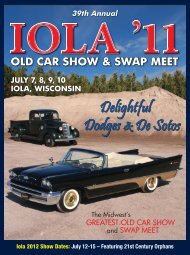

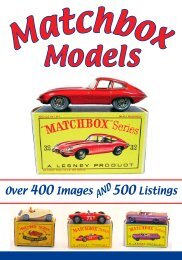
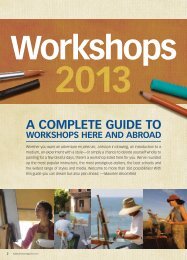
![Index [media2.fwpublications.com] - F+W Media](https://img.yumpu.com/45216355/1/190x245/index-media2fwpublicationscom-f-w-media.jpg?quality=85)
